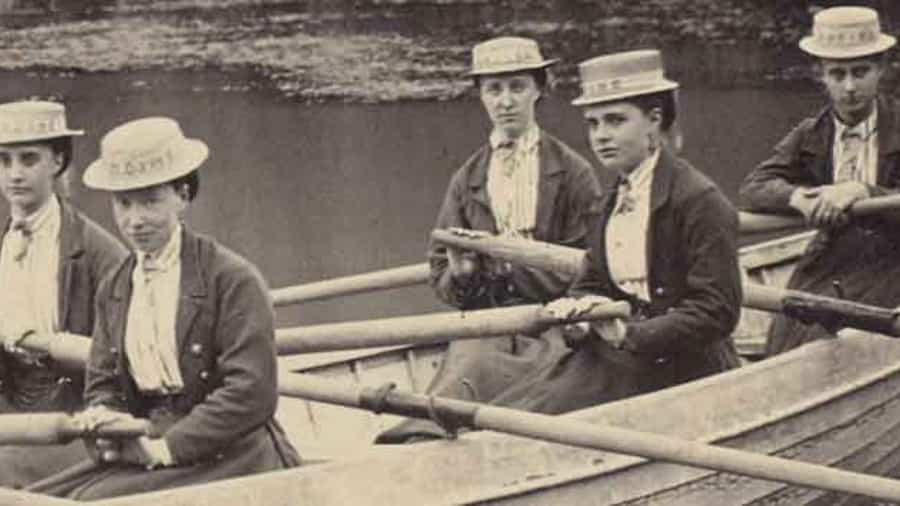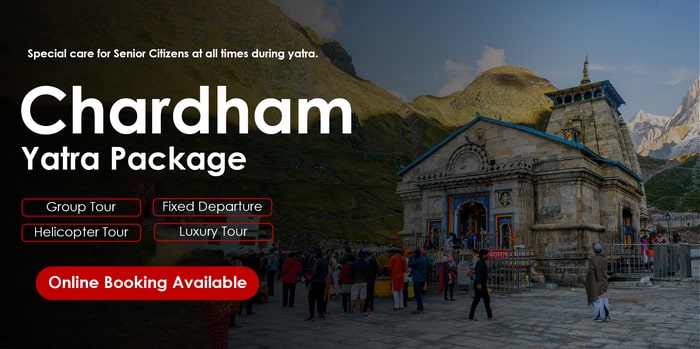Last Updated on January 24, 2025
Devbhoomi Uttarakhand, which forms the crowning glory of India and is home to some of the most panoramic Himalayan ranges and valleys, has a very interesting history that dates back to eons ago. Having found its name in the holy Hindu scriptures, this place is rightfully an abode of gods. Since ancient times, this beautiful hill state has been the source of the Ganga River and is dotted with a mythical charm. Its history is extremely dynamic and interesting. If you are planning to travel to Uttarakhand or are just curious about its past before it gained commercial success, then here is everything you need to know about it.

Early History
Archaeologists have uncovered evidence of the Stone Age in certain places within Uttarakhand. Rock paintings have been found scattered around in places like Lakhu Udyar in Almora, Kimni village, and Gyarkhya cave in the district of Chamoli. Technically speaking, these artworks date back to the Mesolithic age, which indicates the presence of settlements and livelihoods here. Other findings from the Stone Age era have been unearthed in the village of Malari in Chamoli, whose existence dates back to around 1500 BCE, during the early Vedic Era.
There are also mentions of ascetics and rishis who used to travel to these parts of Devbhoomi to meditate in the forests. The Sankha Scripts and Gupta Brahmi have also mentioned this hill state in their inscriptions. Hundreds and thousands of years-old Paleolithic stone tools have been found as well. Additionally, megaliths show that these hills and mountains have been home to humans since prehistoric times.
Uttarakhand during the Puranic Period
According to sources, during the Puranic age, this middle Himalayan region was referred to as Kedarkhand and Manaskhand. All the Puranic literature dating back to this era was centered around the holy river Ganga and its numerous territories that crisscross the state. Other early tribes that inhabited the Garhwal and Kumaon regions included the Akas, Kol-Munds, Nagas, Paharis or Khasas, Kiratas, and Aryans, among others.
Uttarakhand Pre Independence
The Garhwali regions of Uttarakhand were a significant part of the Mauryan Empire, which was unified under King Ajay Pal in the 15th century. Initially, it remained consolidated for a period of 915 years, with its capital being Srinagar at that time. In the early 18th century, the Garhwal parts of Devbhoomi were severely affected by famine, causing widespread suffering. This situation provided the opportunity for the Gurkhas to attack, and the Garhwalis were defeated. After a prolonged period of suffering under the Gurkhas, the British intervened in 1814 and waged a war against them, which marked the end of the bloody Gurkha rule.
British Rule in Uttarakhand
After the British defeated the Gurkhas, some parts of Pauri were renamed as the British Garhwal region, and Dehradun became a significant part of British India. These two regions were handed over to the British in exchange for their help during the Gurkha invasion in the 19th century. Later on, Tehri was formed and went on to become the new state capital. However, British rule in Uttarakhand was marked by harsh policies. Unpopular labor practices were severely imposed on the local people. The British also formed the Garhwal Rifles, which went on to fight against German forces in France, earning two Victoria Crosses for bravery. This Garhwal battalion was later made part of the Indian National Army, which continued to fight valiantly against the British forces.
As the flames of the Quit India Movement gathered strength, the locals in Uttarakhand actively participated in the movement, striving to end British rule and supporting the vision of a unified India. The entire state of Uttarakhand and Tehri Garhwal were included in the district of Uttar Pradesh in newly independent India.
Evolution of Uttarakhand as a State
In 1815, the British decided to form a commission by combining the regions of Garhwal and Kumaon, renaming it the Kumaon province. Recognizing that the lifestyle, beliefs, and traditions of the people here were different from those of the plains, they created a suitable set of laws and modes of governance. For this purpose, the Patwari Halka system was established as a small and separate administrative unit, helping with the efficient governance of the region. This Patwari had the powers of a police force and tax collectors, along with the introduction of the English language in the region. A separate system for land measurement was also introduced to suit local needs. The Garhwali soldiers played a vital role in the Indian freedom struggle, and two regiments of the Indian army were named after the Garhwal and Kumaon Regiments to honor their contributions.
Separation from Uttar Pradesh
There were numerous reasons for the separation of Uttarakhand from Uttar Pradesh. The first demand for separate statehood arose in 1897, and it was followed by a long struggle, costing many sacrifices. Over time, due to the differences in beliefs, traditions, cultures, and the overall lifestyle of the people of the hills, this demand gained significant momentum. The culture and traditions of the Kumaon and Garhwal regions were more similar to those of neighboring states like Jammu and Kashmir and Himachal Pradesh than with the plains of Uttar Pradesh. The identity, ethnicity, and language of the people were also distinct and more aligned with Bihar, eastern Uttar Pradesh, and other hill regions. In 1994, this demand took a mass form, and finally, in 2000, the struggle ended with the creation of Uttarakhand as the 27th state of India.




 Call
Call WhatsApp
WhatsApp Enquiry
Enquiry